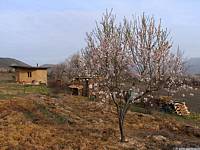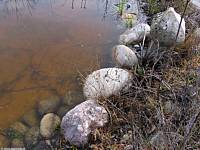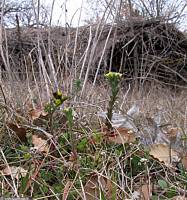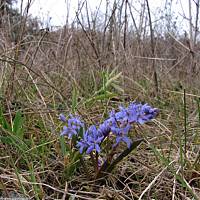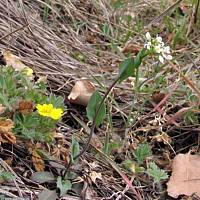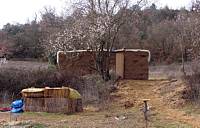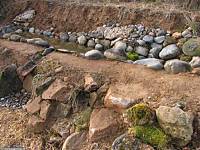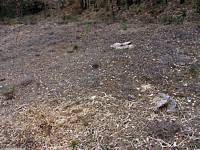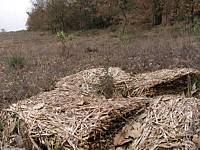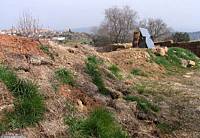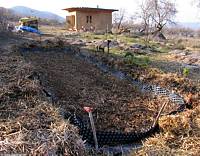|
|
Nature
Switched On
|
|
|
introduction |
2010 March 13 to 21 In the upper pond I detected on the 17th the first dragonfly and the first pond skater and two days later the first Natterjack spawn. Most almond trees are now in full bloom as well as many other early spring flowers. |
|
|
The upper pond is full of Natterjack spawn while there isn't any
in the lower pond yet. 21 March 9:00 |
||
|
But the Common snowdrops (Galanthus
nivalis) that I planted more than a year ago and flowered
last year almost
without any exception, are completely absent this year. Of the 5
planted bulbs of Scilla bifolia
only 2 are flowering this year. Probably some animal or plant
disease is responsible for these poor results.
|
||
|
Erophila verna (white),
Alyssum alyssoides (yellow, right), Senecio vulgaris (yellow,
left), Veronica hederifolia (blue). 20 March 12:45 |
||
| One of
the two emerging Scilla bifolia. 20 March 13:04 |
Thlaspi perfoliatum (white) with the first
flower of Potentilla reptans. |
|
|
I added some details to the drain pond that receives grey water from the shower inside the greenhouse. Instead of designing and executing everything in detail I prefer to do things somewhat loosely in an offhanded way, to create just some conditions and to let me surprise by what nature makes of it. |
||
| The clay
plaster protects the straw bales and offers anchor possibilities for
Ivy. 21 March 9:11 |
||
|
Drain pond with outlet to the
vegetable garden and some stepping stones. 21 March 9:07 |
||
|
I am not the only creature crazy about straw on the terrain. Three
or four times now some animal
On the other hand, it is surprising how long the
The use of straw against erosion is also promising. The hill that was built with rock and loose soil for the placement of the solar panels shows clearly the difference in the vegetation of protected and unprotected areas. |
||
|
Straw flakes completely torn by some beast. The ones at the back
were left intact. 20 March 12:59 |
||
|
Straw flakes, apparently unchanged in colour or structure,
surrounding a Dwarf juniper. 20 March 13:01 |
||
|
The zone in the centre without
straw flakes is significantly less covered by grass (Lolium
perenne, Bromus diandrus and Barley). 20 March 13:21 |
||
|
In the vegetable garden I started to sow some vegetables. In an attempt to fight slugs and snails and get some better results than last year I surrounded one patch with some strips of PE sheets left over from the roof of the garden house. I spread also ashes from the wood stove behind these strips to make the barrier even more unbeatable by the molluscs. |
||
|
PE strips and wood ashes hopefully protecting the sown vegetables
(Chard and Spinach) 13 March 17:06 |
||
|
introduction
|
|
